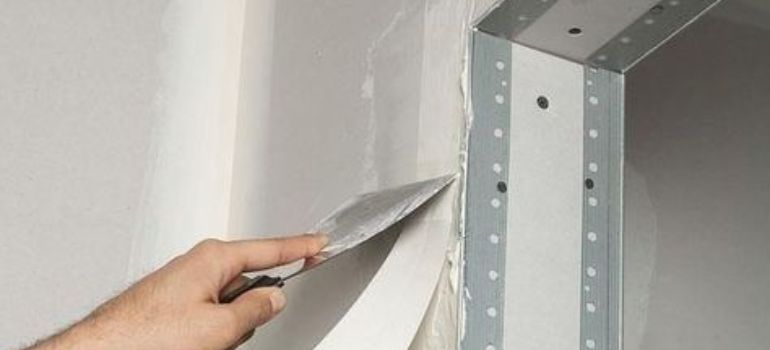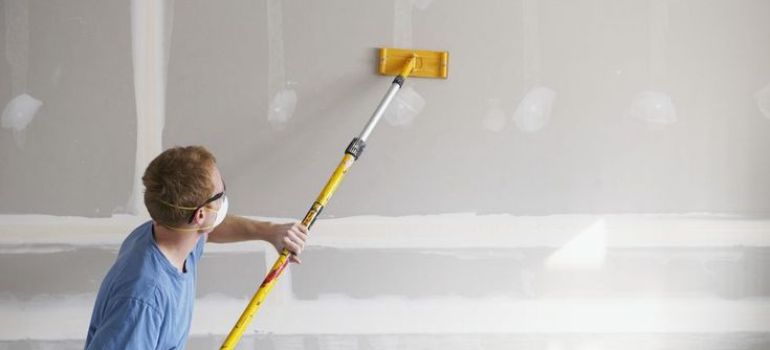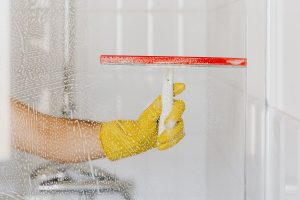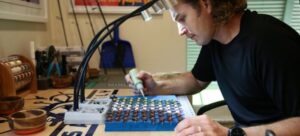Introduction
Drywall dust, consisting of fine gypsum particles, can easily settle on plywood surfaces, leading to a gritty texture that can affect the quality of your project. To ensure a pristine finish, it’s crucial to follow the right steps for dust removal without damaging the plywood’s integrity.
Gathering the Necessary Supplies
Before you begin, gather the following supplies:
- Soft bristle broom
- Dustpan
- Dust mask
- Safety goggles
- Disposable gloves
- Damp cloths
- Bucket of water
- Mild dish soap
- Vacuum cleaner with a HEPA filter
Preparation and Safety Measures
Start by wearing your safety gear, including a dust mask and safety goggles, to protect yourself from inhaling or getting dust particles in your eyes. It’s essential to prioritize safety throughout the cleaning process.
Dry Dust Removal
Begin by using a soft bristle broom to gently sweep the drywall dust from the plywood surface. Sweep in one direction to avoid spreading the dust further. Use a dustpan to collect the dust as you go. Dispose of the collected dry dust in a trash bag.
Damp Cleaning Method
To ensure thorough cleaning, dampen a clean cloth with water mixed with a small amount of mild dish soap. Wring out excess water to prevent over-saturation. Gently wipe down the plywood surface, focusing on areas with stubborn dust residues. Be cautious not to soak the plywood as excessive moisture can cause damage.
Vacuuming and Air Filtration
Using a vacuum cleaner with a HEPA filter, go over the plywood surface to capture any remaining fine dust particles. The HEPA filter ensures that even the smallest particles are effectively trapped, preventing them from re-entering the air.
Post-Cleaning Inspection
After cleaning, inspect the plywood surface carefully to ensure all drywall dust has been removed. If you notice any remaining dust, repeat the damp cleaning and vacuuming steps until the surface is entirely clean.
Protective Measures for Future Projects
To avoid a similar situation in the future, consider taking preventive measures such as covering the plywood with plastic sheets or drop cloths before starting any drywall work. This will minimize the dust’s contact with the plywood surface.
Additional Tips for Effective Drywall Dust Cleaning

While the previous steps provide a comprehensive guide to clean drywall dust off plywood, here are some additional tips to ensure a thorough and efficient cleaning process:
Use Microfiber Cloths:
- Microfiber cloths are highly effective in capturing fine dust particles without scratching the plywood surface. Consider using them for the damp cleaning step.
Work from Top to Bottom:
- Start cleaning from the highest point of the plywood surface and work your way down. This prevents dust from falling onto areas you’ve already cleaned.
Ventilation:
- Maintain proper ventilation in the area where you’re cleaning to help dissipate airborne dust and improve air quality.
Change Filters:
- If you’re using a vacuum cleaner with a HEPA filter, remember to change or clean the filter regularly to maintain its efficiency.
Protective Coverings:
- For large-scale drywall projects, consider covering plywood surfaces with plastic sheets or temporary protective coverings to minimize dust exposure.
Keep Doors Closed:
- If possible, keep doors to adjacent rooms closed during drywall work to prevent dust from spreading to other areas of your home or workspace.
Post-Cleaning Inspection:
- After completing the cleaning process, shine a bright light across the plywood surface to check for any remaining dust or imperfections. Touch up as needed.
Additional Considerations for Clean Plywood Surfaces
Keep a Clean Workspace:
- Throughout your drywall project, maintain a tidy workspace. Regularly remove debris and waste to minimize the chances of dust spreading to the plywood.
Use Dust Control Methods:
- Consider using dust control methods such as dust barriers, floor protection, and dust containment systems. These can help confine dust to the work area.
Address HVAC Systems:
- Turn off or block air vents in the vicinity to prevent dust from circulating through your heating, ventilation, and air conditioning (HVAC) system.
Wear Appropriate Clothing:
- Choose clothing that covers your body to minimize dust contact. Avoid wearing loose or open garments that can easily trap dust.
Properly Dispose of Waste:
- Dispose of all waste materials, including used cleaning cloths and vacuum filter bags, in sealed plastic bags and discard them according to local regulations.
Conclusion
In conclusion, cleaning drywall dust off plywood is a crucial step in any construction or renovation project. By following these steps and safety measures, you can ensure that your plywood surfaces remain clean and ready for further finishing touches. Don’t let drywall dust compromise your project’s quality; take the necessary precautions and cleaning steps for a successful outcome.
Frequently Asked Questions (FAQs)
It’s recommended to use a vacuum cleaner with a HEPA filter as it effectively captures fine dust particles, preventing them from becoming airborne.
Yes, wearing safety gear like a dust mask and safety goggles is essential to protect yourself from inhaling or getting dust particles in your eyes.
No, using a pressure washer can damage the plywood. Stick to gentle cleaning methods to avoid compromising the plywood’s integrity.
It’s best to clean the plywood surface regularly, especially if you notice a significant buildup of drywall dust. Frequent cleaning will help maintain a clean working environment.
In such cases, you may need to use a combination of damp cleaning, scraping, and vacuuming to remove the hardened dust. Be careful not to damage the plywood surface during the process.



